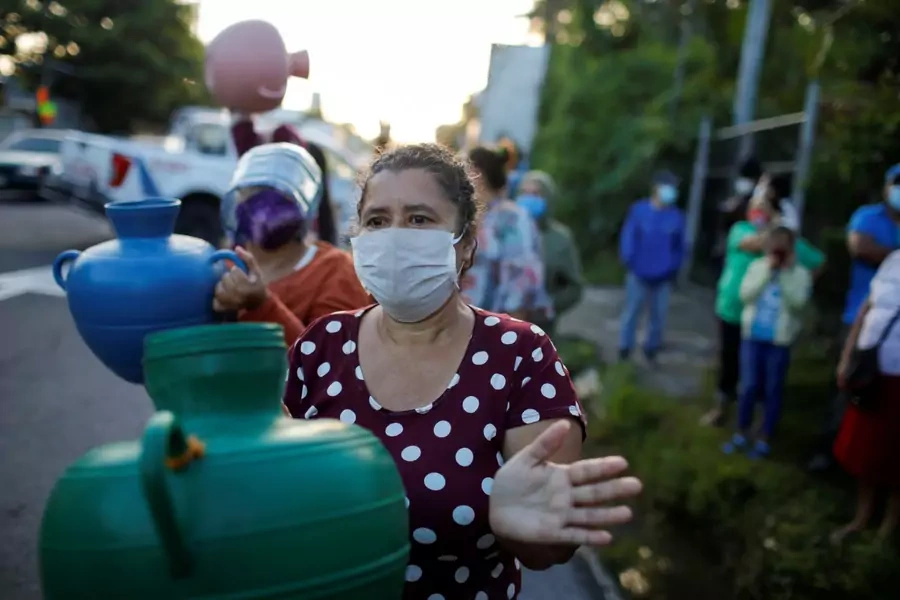Women’s Water Insecurity Is a Global Health Crisis

This post was authored by Victoria Parsons (Twitter, LinkedIn), a member of CFR’s Young Professionals Briefing Series and a Founding Partner of Palm Global Consulting, a boutique global affairs firm based in Miami and Palm Beach.
Today, Monday, March 22, is World Water Day. The theme for 2021 is “valuing water.”
More on:
As we celebrate World Water Day and the significant achievements women have made during Women’s History Month, it is imperative to magnify a global health crisis that impacts women’s progress: water insecurity. According to the World Health Organization (WHO), 785 million people (one in ten) lack access to safe water, and 2.2 billion people do not have access to safe drinking water. The global convergence of COVID-19 and water insecurity elevates the salience of access to water, sanitation, and hygiene (WASH). Access to WASH is integral to improving health outcomes of women and girls, and the development of sustainable communities. Global governance agencies should collaborate with local authorities to develop policies to address water insecurity through the lens of gender and racial equity. The United Nations has elucidated the value of achieving sustainable water systems for all, from global health and equity perspectives through Sustainable Development Goal (SDG) 6, “Clean Water and Sanitation.” Access to clean water and sanitation is essential to sustainable development, and the economic and social progress of women and girls around the world.
Women’s water insecurity is a global health crisis that impacts a multitude of regions, and disproportionately impacts women of color, low-income women, and children. Women and girls are often primarily responsible for water collection, and worldwide devote 200 million hours each day to collecting water. UNICEF found that in 80 percent of households for which water collection is necessary, women and girls are responsible for retrieving water. In sub-Saharan Africa, among households without running water, water collection duties are mostly performed by women and girls. In rural India, women can walk an average of 16 kilometers per day to collect water. In Latin America and the Caribbean, 31 percent of people — usually women — retrieve their water from sources that are thirty minutes away from their homes. In Paraguay, among households for which water is collected away from home, women and girls comprise 57.9 percent of those obtaining water. An analysis from the U.S. Water Alliance indicated that racial disparities in water security exist, disproportionately impacting Black, Latinx, Pacific Islander, and Native American households. For example, approximately 30 percent of Navajo Nation households lack access to running water, and need to collect water outside their home. Water insecurity is a global issue that affects women and girls across developed, emerging, and frontier economies.
Women’s water insecurity has significant environmental, social, and governance (ESG) implications. Women are inordinately affected by failures in the global water system. Building and maintaining sustainable water and sanitation systems are essential to the ability of women and girls to live healthfully. The global water system is harmed by contamination, water and waste mismanagement, climate change, and scarcity. WHO indicates that by 2025, half the world’s population will reside in water-stressed localities. The most water-stressed region in the world is the Middle East and North Africa (MENA). Additionally, Europe contains high water-stressed countries, including San Marino, Cyprus, Belgium, Andorra, Greece, and Spain. Access to clean water for consumption, sanitation, and hygiene is inextricably linked to health outcomes. When women have limited or no access to clean water for hygiene and sanitation purposes, communities become more vulnerable to communicable diseases. Women and girls of color, low-income women, and women living in poverty are significantly impacted by water insecurity and WASH-related diseases. WHO indicates that globally, at least two billion people use drinking water contaminated with fecal matter. The use of contaminated water for consumption and sanitation is linked to the transmission of diseases such as cholera, typhoid fever, and hepatitis A and E. WASH-related diseases are the cause of death for nearly one million people each year, prevalent in rural areas in developing nations such as Yemen, Bangladesh, and Malawi. A notable water contamination crisis in the United States was the Flint water crisis in Michigan. This urban water crisis has had a disparate impact on low-income residents, Black women, and children, which has resulted in lower fertility rates, increased fetal death rates, and lead exposure.
The COVID-19 pandemic has magnified women’s water insecurity as a global health crisis. As we celebrate World Water Day, global and local public health agencies, civil society, and the private sector need to ensure that inclusive, localized, and sustained solutions are implemented to address women’s water insecurity. Cross-sectoral local engagement is integral to creating a paradigm shift toward building sustainable water systems to augment women’s health, economic, and social progress.
More on:
 Online Store
Online Store